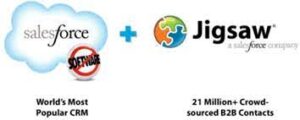Why BANT Isn’t Always Enough: Rethinking Lead Qualification for Modern Sales
In the world of sales, the BANT framework (Budget, Authority, Need, Timing) has long been a go-to method for qualifying leads. For companies selling familiar or low-complexity products where price is the primary differentiator, BANT can be an effective tool for identifying prospects ready for aggressive sales pursuit. However, in today’s rapidly evolving business landscape—particularly for B2B tech companies offering innovative or paradigm-shifting solutions—relying solely on BANT can actually do more harm than good.
In this article, we’ll explore the limitations of the BANT framework, why it falls short in certain scenarios, and how you can adapt your lead qualification process to better align with modern sales challenges.
What is BANT, and Why is it Popular?
BANT, a framework popularized by companies like IBM, is designed to help sales teams quickly assess whether a prospect is worth pursuing. The acronym stands for:
- Budget: Does the prospect have the financial resources to purchase your solution?
- Authority: Is the prospect the decision-maker or someone who can influence the decision?
- Need: Does the prospect have a clear and urgent need for your product or service?
- Timing: Is the prospect ready to make a purchase within a reasonable timeframe?
For straightforward sales scenarios, BANT works well. It helps sales teams prioritize leads that are most likely to convert, saving time and resources. However, as sales environments become more complex—especially in B2B tech—the limitations of BANT become increasingly apparent.
The Limitations of BANT in Modern Sales
While BANT is a useful starting point, it has several inherent limitations that can hinder your sales efforts, particularly when selling innovative or high-complexity solutions. Here’s why:
- It Assumes a Linear Buying Process
BANT operates on the assumption that buyers follow a linear, predictable path to purchase. In reality, modern B2B buying processes are often non-linear, involving multiple stakeholders, evolving needs, and iterative decision-making. By focusing solely on BANT, you risk overlooking prospects who are in the early stages of exploring solutions but have significant long-term potential. - It Overemphasizes Budget
While budget is an important factor, it’s not always the most critical one—especially for companies selling transformative solutions. Prospects may not yet have a budget allocated for your offering, but that doesn’t mean they won’t find value in it. By disqualifying leads based on budget alone, you could miss out on high-potential opportunities. - It Ignores the Complexity of Authority
In today’s B2B landscape, purchasing decisions often involve multiple stakeholders, each with varying levels of influence. BANT’s focus on identifying a single “authority” figure oversimplifies this dynamic, potentially leading to misaligned sales efforts. - It Doesn’t Account for Education and Relationship Building
For innovative or paradigm-shifting solutions, prospects may not yet fully understand their need or how your product addresses it. BANT’s emphasis on immediate need and timing can lead sales teams to overlook opportunities to educate prospects and build relationships over time.
When BANT Falls Short: Real-World Scenarios
Let’s look at a few scenarios where BANT might not be the best fit:
- Selling Disruptive Technology
If your product introduces a completely new way of solving a problem, prospects may not yet recognize the need for it. By focusing on BANT, you might disqualify leads who could become your biggest advocates once they understand the value of your solution. - Long Sales Cycles
In industries with long sales cycles (e.g., enterprise software), timing is often fluid. A prospect who isn’t ready to buy today might be a perfect fit six months from now. BANT’s focus on immediate timing could cause you to abandon these prospects prematurely. - Multi-Stakeholder Decisions
In complex B2B sales, decisions are rarely made by a single individual. By focusing on identifying one “authority” figure, you risk neglecting other key influencers who play a critical role in the decision-making process.
How to Overcome BANT’s Limitations
The good news is that you don’t have to abandon BANT entirely. Instead, you can augment it with additional strategies to create a more holistic lead qualification process. Here’s how:
- Adopt a Value-Based Selling Approach
Shift the focus from budget and timing to the value your solution delivers. Engage prospects in conversations about their goals, challenges, and how your product can help them achieve measurable outcomes. - Map the Decision-Making Unit (DMU)
Instead of focusing on a single decision-maker, identify all the stakeholders involved in the purchasing process. Understand their roles, priorities, and pain points to tailor your sales approach accordingly. - Emphasize Education and Relationship Building
For innovative solutions, invest time in educating prospects about the problem your product solves and how it works. Build trust and nurture relationships over time, even if the prospect isn’t ready to buy immediately. - Use a Lead Scoring Model
Complement BANT with a lead scoring model that incorporates additional factors, such as engagement level, fit with your ideal customer profile, and potential lifetime value. This will help you prioritize leads more effectively. - Leverage Technology
Use CRM and sales enablement tools to track and analyze prospect interactions, identify patterns, and refine your qualification criteria over time.
Conclusion: Evolving Beyond BANT
While BANT remains a useful tool for certain sales scenarios, it’s not a one-size-fits-all solution. For B2B tech companies selling innovative or high-complexity offerings, a more nuanced approach to lead qualification is essential. By addressing the limitations of BANT and incorporating strategies like value-based selling, stakeholder mapping, and relationship building, you can better align your sales process with the realities of modern B2B buying.
In a world where customer needs and decision-making processes are constantly evolving, the ability to adapt and think beyond traditional frameworks like BANT will set you apart from the competition. So, the next time you’re qualifying leads, ask yourself: Is BANT enough, or is it time to rethink your approach?














